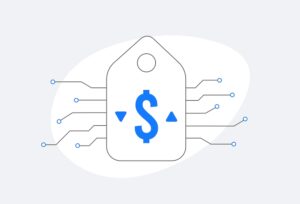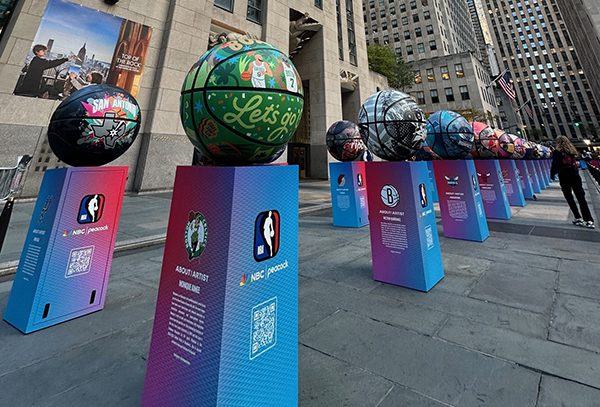 As advertising has evolved, the relationship between brands and agencies has naturally undergone a significant evolution as well. Technology and the proliferation of user data has primarily driven this shift, and data management and marketing platforms have become increasingly more sophisticated. Though that data and technology has enabled advertisers to engage with consumers in previously unimaginable ways, it has also fostered a rift between agencies and brands.
As advertising has evolved, the relationship between brands and agencies has naturally undergone a significant evolution as well. Technology and the proliferation of user data has primarily driven this shift, and data management and marketing platforms have become increasingly more sophisticated. Though that data and technology has enabled advertisers to engage with consumers in previously unimaginable ways, it has also fostered a rift between agencies and brands.
Agencies were once the arbitrators of “what consumers want” in the eyes of their brand clients. They assembled focus groups to find out consumers’ opinions—their values, tastes, interests, needs and dislikes—and then translated a brand message into creative that aligned with those opinions. Naturally, the statistical validity of such small samples, even as agency research expanded into surveys and panels, was questionable, but scale was limited by resources and capabilities.
Today, focus groups seem almost laughable to those of us entrenched in the world of data, but you’d be surprised how many agencies still rely on them, and how often. With such a wealth of data and data management technology at their fingertips, which surely provides a far more complete and accurate picture of customers and prospects, why would they content themselves to base campaigns on the findings from 20-person focus groups and 100-person online surveys?
Well, for a few reasons.
Our technological capabilities continue to advance, but that does not necessarily mean the entire industry is able to keep up. In fact, many advertisers and agencies are still hamstrung by the sheer volume of data they gather; they lack either the technology or resources to analyze it and make use of it in any tangible way, and much of that investment ends up wasted. As many of us know, agencies are constantly having to justify their budget and their own fees, so wasting investment is a risk they’d rather avoid, but ultimately they simply don’t know how to make heads or tails of it, so they stick with what’s tried-and-true.
The eminently quotable Malcolm Gladwell keynoted at the Postback 2015 conference recently, and addressed the problem of “data paralysis” and the inherent difficulty in gleaning timely, actionable insight from these mountains of customer information we continue to amass.
“The data can’t tell us the nature of the behavior. Maybe it’s developmental; maybe it’s generational … the reason your profession is a profession and not a job is that your role is to find the truth in the data.”
And therein lies the real challenge, and perhaps the root cause of the growing divide between brands and agencies, as it pertains to mobile. Brand marketers look for the truth in the data on both sides of a campaign—insight to inform it on the front end and measurement of success and impact at the close. Agencies are more inclined to loosely interpret customer insight in order to align with a creative branding approach, to drive brand awareness that is absolutely important but ultimately not measurable.
Mobile arguably generates the most accurate and timely data available. We spend more time with our mobile devices than practically anything else, devices which are equipped with sensors and tracking tools, which measure almost all of our day to day activities including shopping, navigation, transportation, search, entertainment, etc. Combine that depth of reach with the granular measurement capabilities of mobile to track both online and offline information and you get a powerful engagement channel that generates quantifiable, tangible impact.
As I said before, agencies constantly have to justify their own existence, through results, which can often be difficult to quantify, and the same holds true for every data or technology solution provider in the ecosystem. As such, attribution metrics are vital to the health of that ecosystem. Mobile measurement tools are capable of capturing every KPI, from downloads to purchases and in-app activity, and tracking it back to its “origin.” This gives brands the most granular insight into understanding how and when their consumers are engaging with their brands, learning the exact moments to interact with them, as well as ensuring that vendors and partners are compensated appropriately.
The question though, is what kind of attribution are you after?
If you want mobile direct response and performance metrics — no problem. With location-based and behavioral data, it’s relatively easy to see which channels or programs delivered on which benchmarks. What happens though when you are trying to measure the effect of your app on in-store traffic, for example, or how it enhanced your brand perception among current and potential customers? Attribution from a branding perspective is still challenging, but this valuable data is undoubtedly becoming the focus of advertising technology because it can deterministically define consumer behavior and relationships, enabling brands to enhance their message and reach out to audiences in the right moments.
This is why Gladwell and other data pioneers recommend that agencies shift their tactics from a creative-based strategy to a more formulaic approach. Piles and piles of mobile consumer data can be boiled down to simple (well, maybe intermediate) math using technology that can predict the most effective formula to reach a desired outcome, even as it relates to branding objectives.
Mobile has turned many industry traditions and standard practices on their heads with its explosive growth and engagement capabilities, necessitating even more new technology and platforms and entirely new ways of reaching out to consumers. Performance and brand advertisers alike are always looking to gain more accurate, insightful ways of measuring engagement and tracking campaign performance. All brands need to understand, first and foremost, what those engagement metrics are, and be very clear on their goals and what their measurement of success is. From there the way to bridge that gap is to come together on the importance of data in tracking user engagement overall, which includes brand perception and direct response, and using that insight to dictate attribution and overall campaign success.
Galia Reichenstein is COO of Taptica.





